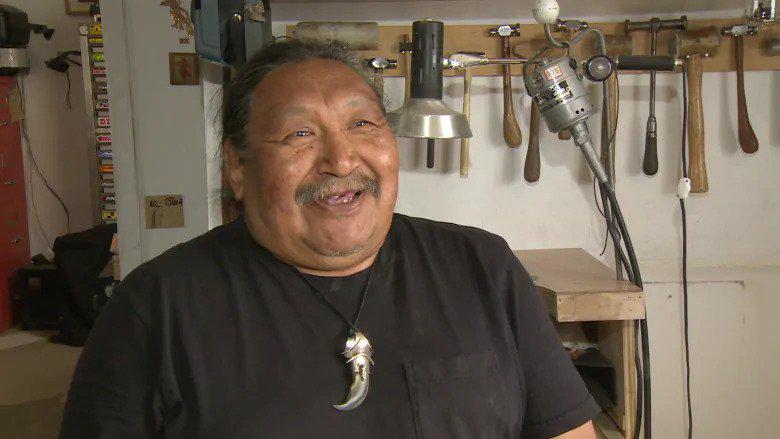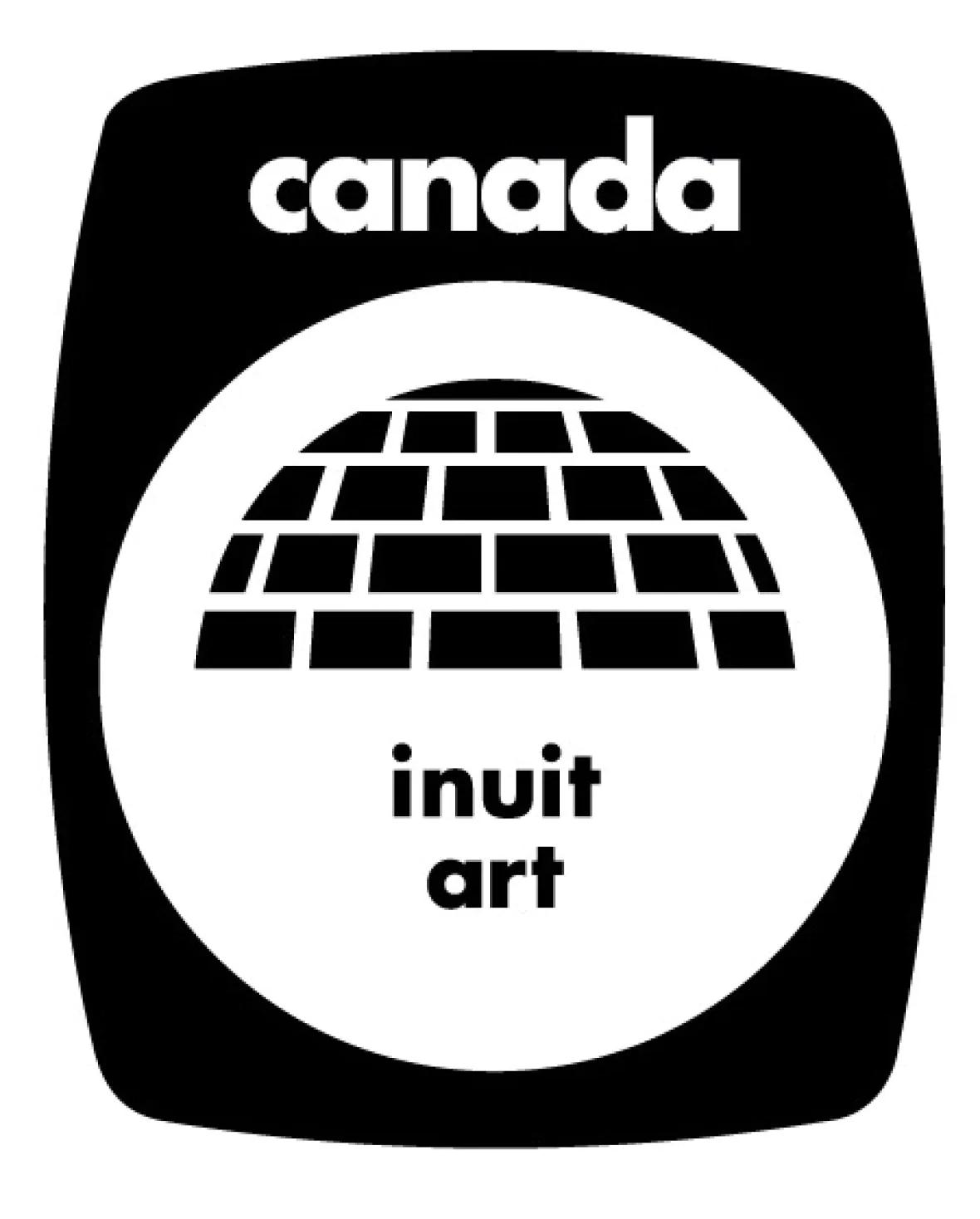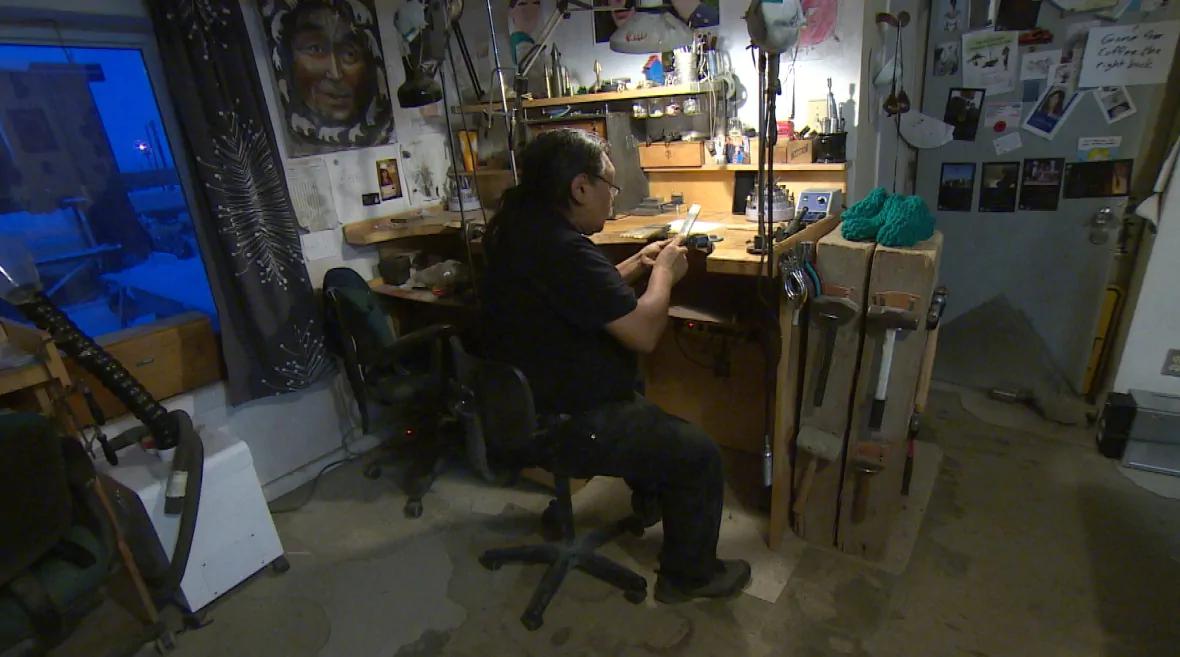After 60 years, Inuit-led organization takes over Inuit art trademark from feds by Sara Frizzell
CBC News | July 2017
Categories: news
After 60 years, Inuit-led organization takes over Inuit art trademark from feds by Sara Frizzell
Sara Frizzell / CBC News / Jul 13, 2017

In the late 1940s and early 1950s when Inuit art was introduced to southern Canada's art scene, the federal government established a trademark to protect artists' work from copycats.
That trademark, called the igloo tag, has now been transferred from the Department of Indigenous and Northern Affairs to the nationally-mandated Inuit Art Foundation to manage.
"It's really, really important because for the first time in 60 years an Inuit-led organization is now managing a trademark that is implicitly about Inuit identity and Inuit artwork," Alysa Procida, executive director of the foundation, told CBC.
The tag was implemented in 1958 to authenticate pieces made by Canadian Inuit and while it protected all Inuit art, it was primarily designed to protect sculpture from mass-market, cast-moulded copies.
'Journey of decolonization'
"Actions like transferring the rights of the igloo tag trademark to the Inuit Art Foundation are small, but powerful steps on the journey of decolonization," Carolyn Bennett, Minister of Indigenous and Northern Affairs said in a statement.
With the transfer, the logo was also updated to say Inuit art instead of Eskimo art, something Procida says was long overdue, but difficult to complete during the four-year handover process.

The logo with the updated wording was unveiled when the handover to the Inuit Art Foundation was announced. (Inuit Art Foundation)
"Now that we own the rights, one of our first priorities was to make sure that the wording was updated to reflect how Inuit represent themselves," she said.
Mathew Nuqingaq, president of the Inuit Art Foundation, says he's glad that the igloo tag will be part of the foundation's strategy to support Inuit artists.
"We hear a lot about people who use the tag to show their artwork around the world and I am happy it'll continue to be used," he said in Inuktitut.
Similar trademarks exist around the world. For example, Inuit in Alaska have the silver hand trademark.
26 percent of Inuit work in the arts
In conjunction with the trademark handover, the federal government released the results of a study conducted in 2015 on the impact of Inuit art on the economy.
In 2015, all forms of Inuit art, including visual art, performing arts, film and writing contributed $87.2 million to Canada's GDP.
Nuqingaq at work in his Iqaluit studio. (Vincent Robinet/CBC)
The industry sustained the equivalent of more than 2,700 full time jobs, most of which were in Inuit Nunangat, the Inuit homeland in Canada.
And more than a quarter of Inuit over the age of 15—around 13,650 people—are engaged in the production of visual arts and crafts.
"It strikes me that it reflects what a lot of us know intuitively, which is that art is an integral part of a lot of people's lives," Procida said.
But she says it's nice to have the numbers to back that up.
Other trends were also confirmed by the numbers, including the fact that art from Labrador is "exploding," which Procida says is nice to see because historically art from the area has not received the same federal support or outside recognition.
"The tide is changing and we want to address some of these historical inequities in how artists are supported in different regions," Procida said.
The foundation offers artists professional development opportunities, organizes artist residencies and runs a quarterly magazine.

With files from Toby Otak and Michelle Pucci


